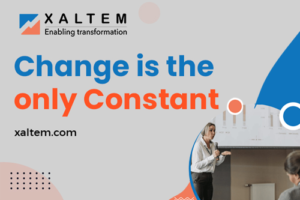We live in the age and times of significant scarcity of organization resources for investments. The external environment for most organizations, and more particularly large enterprises who have a global footprint, is posing headwinds that are stalling growth and profitability. In this context investment decisions in large scale learning and development interventions are invariably being looked at with a critical lens. It is imperative for learning designers and leaders to get the fundamentals of effective learning design principles first time right. Interventions that clearly demonstrate significant business outcomes through measurable learning transfer. In this article we share a few fundamental guiding questions that can inform learning design strategic choices.
Q1: Who is the sponsor of the intervention? What is the role of the managers of the participants? ~
>> For an intervention to have even the potential for success in terms of learning transfer, or in other words, application of learnt skills and behaviours in the flow of work, it is important to secure full sponsorship of the business leaders. For learning transfer to happen in business or operations teams, sponsorship by the respective leadership teams would be critical. And we would even go ahead and say that just sponsorship from the people leadership of the organization will not be adequate, period. Unless the transfer goals become an integral part of the daily routine of the participants it is unrealistic to expect that they would drive application by themselves.
In this regard, what becomes extremely critical, is the role of the managers of the participants. The design of the intervention has to clearly specify what role managers are expected to play in terms of coaching and reviewing the learners in terms pf the learning application. And why would managers take the trouble of this “additional work”? Because their senior leadership is a direct sponsor of the intervention. Additionally, it is recommended that managers are oriented on the intervention highlights, goals, and the specific ask around their involvement and actions, before launch of the intervention to the learners. If they could be made to collaborate in the deployment of the intervention to their direct reports that would further ensure their commitment and participation in the transfer.
Q2: What are the available opportunities for participants to apply the learning from the intervention/ How is learning transfer measured~
>> Adult learning principles demand learners see a clear connection to learnt skills and behaviours and the requirements of their work routine and tasks. The design of the intervention must firstly ensure that a clearly defined learning application plan is available and well explained to the learners. Secondly, the application plan must be designed to be in the flow of work and not be a stand-alone plan. As the saying goes ~ one must measure to be able to manage. The application plan needs to have clear and easily measured KPIs. This enables self-monitoring of application by learners, and subsequent convenience of application review by leadership.
Q3: What are the outcomes of application of learning? What are the consequences of not applying~
>>Adult learning principles also mandate an overt connection between learning application and desired outcomes, including the ability to solve workplace issues and problems, favourable performance outcomes including incentives, performance rating etc. The question the learning designer and practitioner need to ask themselves ~ is the connection between what is expected from the learners in terms of application and favourable outcomes clearly defined; and is this connection evident to the learners themselves?
While this overt linkage between learning transfer and favourable personal learner outcomes needs to defined, just by itself it may not be adequate to drive the desired level of learning application. The “whirlwind” of the workplace is potent enough to dislodge learners from application despite intentions to do so. So, along with positive transfer outcomes, the learning design must incorporate and articulate the consequences if there is failure to transfer learning. We recommend the consequences to be defined at the learner and the manager of the learner level at least to ensure managerial attention to and reinforcement of learning application.
Q4: Who reviews the learning application? What is the process of review? ~
>> For the focus and importance of the intervention and the learning transfer to attain and sustain at a desired level, the review of the application needs to be done by the highest level of leadership. This would automatically ensure a positive cascade of the review of the success and application at each level of leadership up to the manager of the learners. And from a process perspective, the effective learning application review must form an integral part of the regular leadership review cadence and not as a separate event. The frequency of the review could be calibrated depending on the level of hierarchy.
One may ask this question ~ how would it be possible to secure leadership bandwidth for review of multiple programs. We would say get their buy in and review space for the most important and critical intervention. This would give a significant boost to the desired learning culture of the organization. And moreover, in the times we live in, even thinking of deploying multiple interventions may be a luxury. It is many times more effective to do less and get better business outcome.





